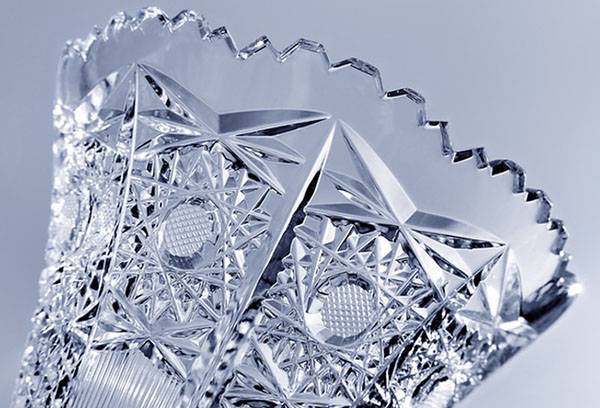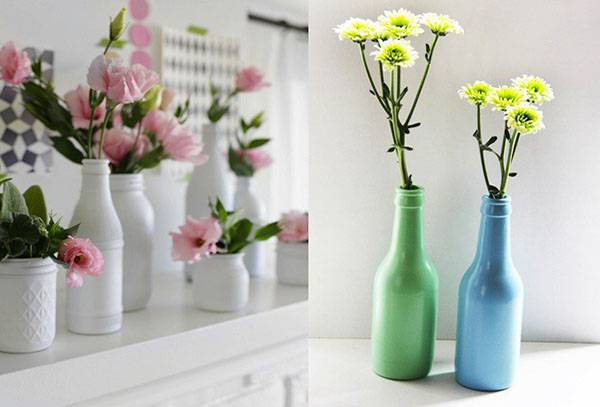Ways to clean a vase inside and out
Living bouquets will decorate any room, but when the flowers wither, the question arises of how to wash the vases. If ceramic vessels are cleaned well enough on the outside, then in crystal and glass any internal contamination will be visible. Unsightly gray sediment at the bottom, rings of lime and rust on the neck will immediately give the composition a sloppy look. And if the water has not been changed for several days, the smell of rotten liquid can drown out the aroma of roses and lilies. Do not listen to statements that no matter how good the vase is, it will still be dull. Don’t put a beautiful vessel in the far corner; just put in a little effort and it will look as if it had just come out of the hands of a master.

Cleaning crystal and glass
First, you need to thoroughly wash the outside of the vase so that when cleaning the inside surface you can notice any remaining dirt. Crystal is a capricious material; if not properly cared for, it becomes dull and loses its shine. Cleaning glass is much easier, but if handled incorrectly, it will also lose its decorative appearance.
Immediately set the baking soda aside. The crystal vase should be washed in plain warm water. If the contamination is very strong, you can use a weak solution of soap or mild dishwashing detergent. A soft toothbrush can clean a corrugated surface at home. Rub cloudy items carefully with coarse salt. Make sure that sharp grains do not scratch the surface.After washing, rinse the items with clean water with a little vinegar or wipe with an alcohol-soaked cloth, and the shine will be restored.
Remember how to wash dishes made of transparent materials so that they do not lose their beauty. When washing crystal and decorative glass, follow a few rules.
- Place a soft towel at the bottom of the sink or basin to prevent the dishes from breaking or scratching.
- Pre-wipe the products from dust with a dry cloth.
- Avoid temperature changes. Do not wash vases in hot or cold water, use liquid at room temperature.
- After washing, thoroughly wipe the vessel so that no traces of dried drops remain.
- If the vase has painting or gilding, any cleaning composition should be tried first on an inconspicuous area. If the colors have not faded, you can clean the entire product.
Some dishwashers have settings for cleaning crystal. You can try cleaning your vase if the material from which it is made does not contain lead, and washing does not involve temperature changes. Still, rather than risk an expensive product, it is better to wash it by hand. Spend a few minutes and the vase will become clean and shiny again.
Advice
If the vessel is very dirty, put it in water for several hours after boiling the potatoes, and then wash it. The broth should be at room temperature.
Washing ceramics
It is advisable to keep ceramic vases in cold water for several hours immediately after purchase, and then rinse with hot water. After this procedure, the glaze will become stronger. Contaminated vessels at home should be washed with hot water and soda. Recesses, places where handles are attached, and other areas where dirt collects can be cleaned with a toothbrush or cotton wool wrapped around a toothpick.After washing, the product should be rinsed and wiped dry.
Porcelain and earthenware vases should not be washed in hot solutions. Use warm soapy water. If stains appear on the vase, add a little ammonia to the water and rub the stained area.
To clean porcelain and earthenware you can use:
- soda;
- salt;
- vinegar;
- cloth soaked in turpentine.
Cleaning a vessel with a narrow neck
The most difficult part to clean from plaque is the inner surface of a vase with a narrow neck. If you can still reach the dirty circles on the neck with a finger, a toothbrush or a cloth wrapped around a pencil, then it is very difficult to find a tool for washing the bottom. The brush will not always reach hard-to-reach areas, and its hard parts can scratch the vessel.
Do not use hard tools or cleaning agents with an abrasive effect. A glass vase with a narrow neck can be cleaned perfectly without touching its inner surface. Use one of the methods.
- Pour table vinegar into the vase and leave overnight.
- Pour rice or buckwheat into the vessel to be cleaned, add soda and pour almost the full volume of warm water. Shake the vase vigorously until dirt is removed.
- Take 8 tbsp. spoons of warm water, add 2 tbsp. spoons of semolina and 3 tbsp. spoons of dry mustard. Rinse the inside of the vase with the composition, and then rinse with a solution of potassium permanganate (0.5 teaspoon per 3 liters of water).
- To wash off green stains from flowers, mix 3 tbsp. spoons of rice or buckwheat with 2 tbsp. spoons of vodka, pour the composition inside the vessel and shake. If the greens have not come off, leave for a few minutes and shake the contents vigorously again.
- Mix equal parts crushed egg shells and baking soda. Shake the vase several times, taking breaks for 10-15 minutes.
Be sure to check whether the chosen product will not damage your vase. There are many types of crystal and ceramics, each material reacts differently to one or another medium. Try cleaning in an inconspicuous area and, if nothing bad happens, treat the entire vessel. When all the plaque is cleaned off, rinse the vase well and it will look like new.
A vase made of any material can be cleaned at home so that no traces of salts or green deposits remain. Remember that the most magnificent bouquet in dirty dishes will lose almost all its charm. The composition should be uniform: a tall vessel washed to a shine, flowers, accessories. If you properly care for glass, crystal or ceramics, the dishes will last a long time and will not lose their attractive appearance for many years.

